How to Clear System Data on iPhone
Every iPhone user encounters the mysterious “System Data” at some point, often when they least expect it—usually in the form of a notification that storage is almost full. In this article we will address the most frequently asked questions about iPhone System Data and discusses effective methods for managing it. We will guide you through what system data is, why it’s important to keep it in check, and how to effectively manage it to keep your iPhone performing at its best.
What is ‘System Data’ on an iPhone and Why is it Important to Manage?
‘System Data’ on an iPhone refers to the space occupied by the operating system’s files that are necessary for the proper functioning of your device. These files include:
- System caches: Temporary storage that helps apps and websites load faster.
- Logs: Records of system operations, useful for debugging.
- Other resources: Includes Siri voices, fonts, and system updates.
Managing system data is critical because unchecked accumulation can lead to several issues:
- Reduced storage space: Excessive system data can consume space that could otherwise be used for apps, photos, and videos.
- Slower performance: As storage fills up, your iPhone may slow down, affecting the user experience.
- System crashes and errors: In severe cases, too much cached data or outdated logs can cause system errors or apps to crash unexpectedly.
Why Clear System Data on Your iPhone?
Clearing system data helps reclaim storage, enhances performance, and maintains the reliability of your device. It’s a necessary step for ensuring that your iPhone runs efficiently, especially for users who frequently update their apps and OS, or who heavily use their devices for various multimedia.
How Can You Check Your System Data Storage via the Device Settings?
To effectively manage your iPhone, regularly check how much space System Data consumes. Follow these steps to check and clear system data on iPhone storage:
- Open Settings: Tap the ‘Settings’ icon on your home screen.
- Select General: Scroll down and choose ‘General’.
- Access iPhone Storage: Click on ‘iPhone Storage’. The device will calculate and display how storage is distributed across various categories.
- Locate System Data: Identify the ‘System Data’ section to see the space it occupies, typically shown in gray on the storage graph.
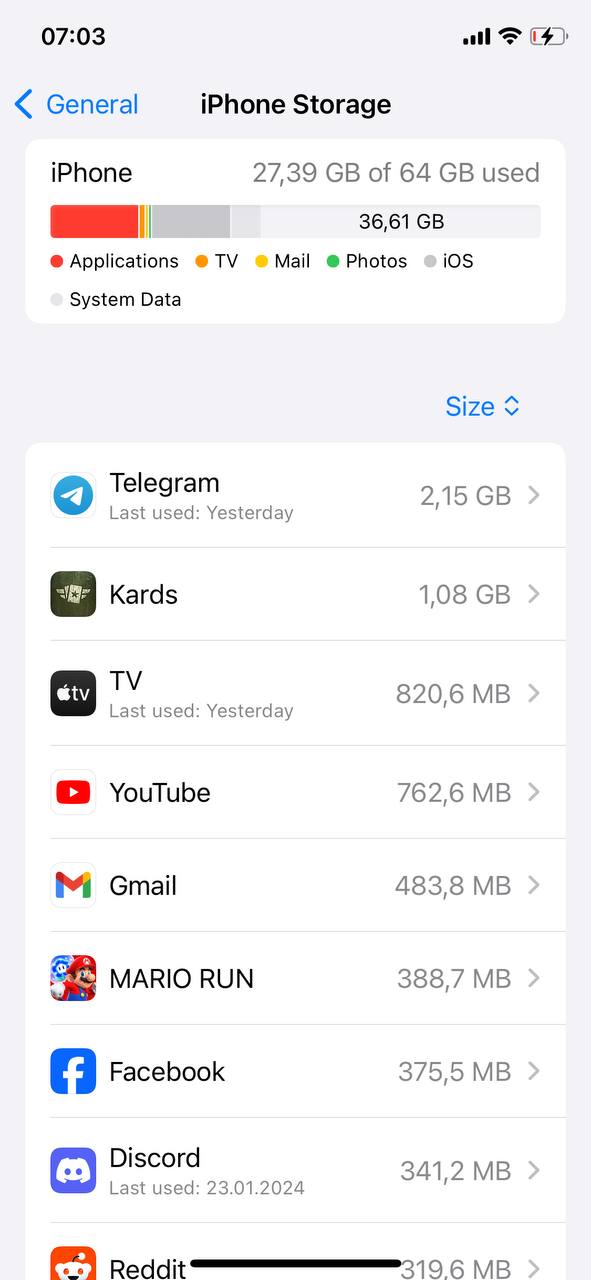
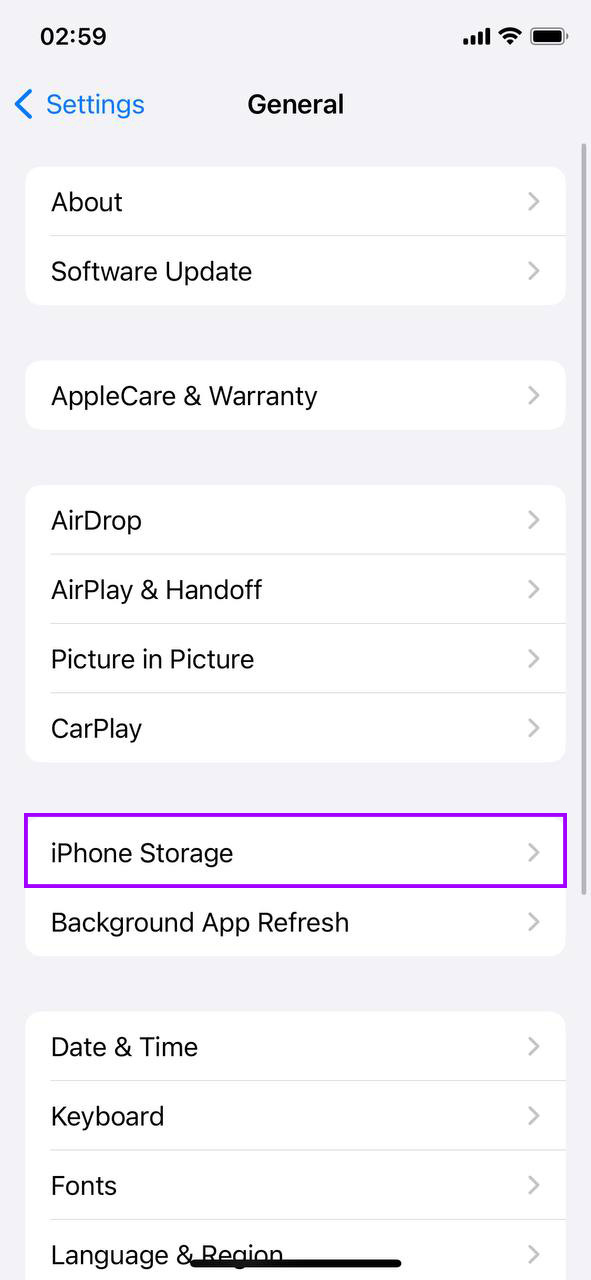
This process helps you keep track of storage usage and is essential for maintaining your device’s performance. With regular checks, you can decide when to manage system data on iPhone effectively.
In the next section, we will explore the reasons why System Data sometimes uses a significant portion of iPhone storage.
Why Does System Data Sometimes Take Up a Significant Amount of Storage on iPhones?
System Data on an iPhone can sometimes occupy a substantial portion of your device’s storage. This happens due to several factors:
- Frequent Updates: Regular updates to iOS and apps can leave behind residual files that contribute to system data.
- Caching of Content: iPhones cache a lot of content from apps and websites to enhance performance and speed up loading times. Over time, these caches can grow significantly if not managed.
- Logs and Temporary Files: Diagnostic logs and temporary files are continuously created by the operating system to aid in the smooth running of apps and services. These logs accumulate unless they are cleared out.
Impact of Large System Data:
- Reduced Overall Performance: A large amount of stored System Data can slow down your iPhone, making apps load slower and reducing responsiveness.
- Less Space for Other Data: Essential storage space gets used up by non-critical system files, leaving less room for personal files such as photos, videos, and app data.
Understanding these factors helps in taking preventive steps to reduce system data on iPhone, ensuring that your device remains fast and efficient. Regular maintenance, like clearing cache and updating only when necessary, can significantly minimize the footprint of System Data.
In the following section, we will discuss why clearing the Safari cache is a particularly effective method for managing System Data.
Why Clearing Safari Cache as a Method to Manage System Data Is Effective?
Clearing the Safari cache is a powerful method to manage System Data for several reasons:
- Immediate Impact: When you clear the cache, you immediately free up space that was previously used to store website data. This can significantly decrease the System Data volume.
- Enhanced Performance: By removing old or unnecessary cache files, Safari operates more efficiently. This leads to faster browsing speeds and quicker response times when loading web content.
- Prevents Data Overload: Regularly clearing the Safari cache prevents the accumulation of outdated data that can clutter the system and lead to decreased device performance.
To clear system data cache iPhone by removing Safari cache effectively, follow these steps:
- Open Settings: Start by tapping the ‘Settings’ icon on your iPhone’s home screen.
- Navigate to Safari Settings: Scroll down in the Settings menu and tap on ‘Safari’ to access Safari’s specific settings.
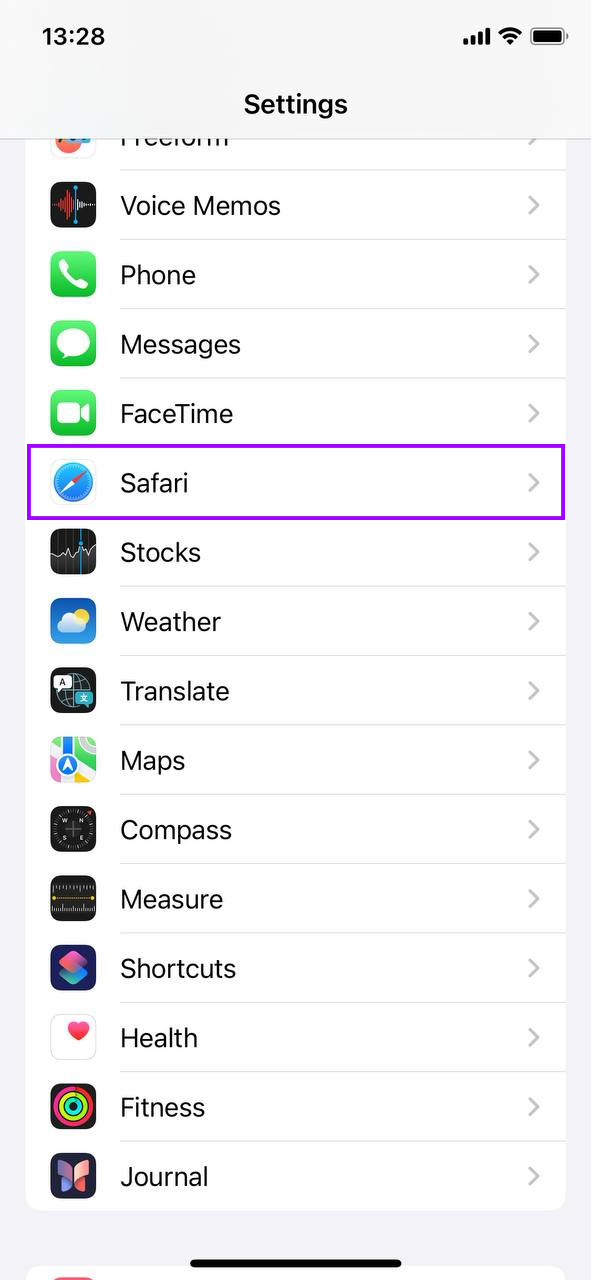
- Clear History and Website Data: Scroll down to the ‘Privacy & Security’ section and tap on ‘Clear History and Website Data’. This option will be highlighted in blue, indicating that you have data to clear.
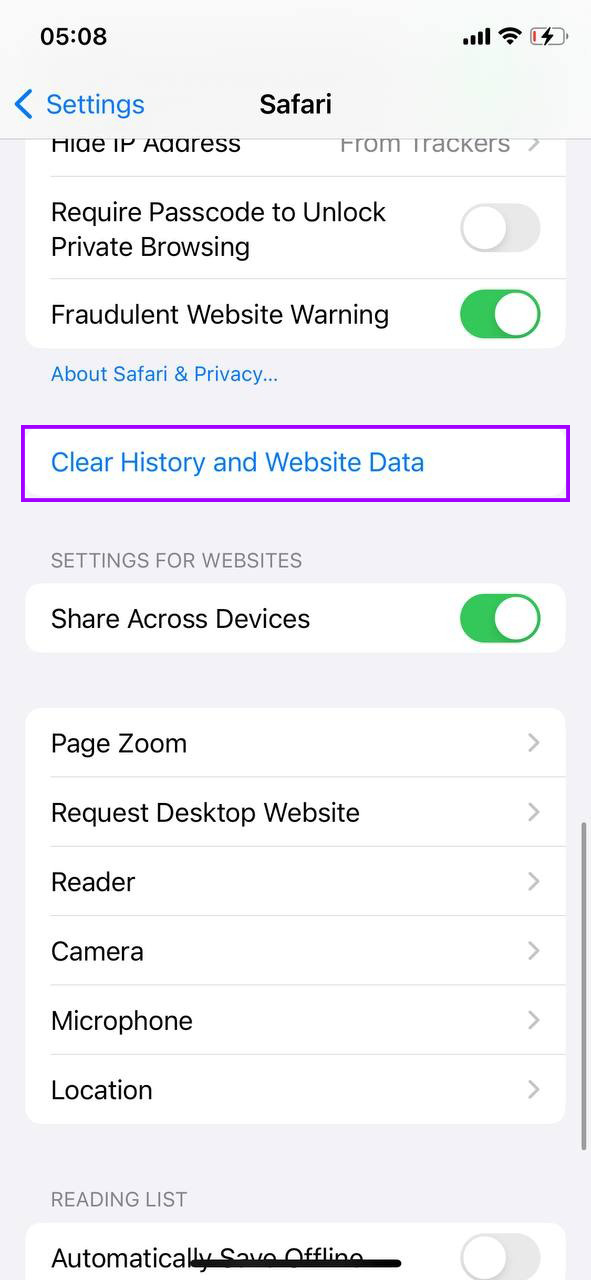
- Confirm the action: A prompt will appear warning you that this will clear your browsing history, cookies, and other browsing data from Safari on all devices signed into your iCloud account. Tap ‘Clear History and Data’ to confirm and proceed.
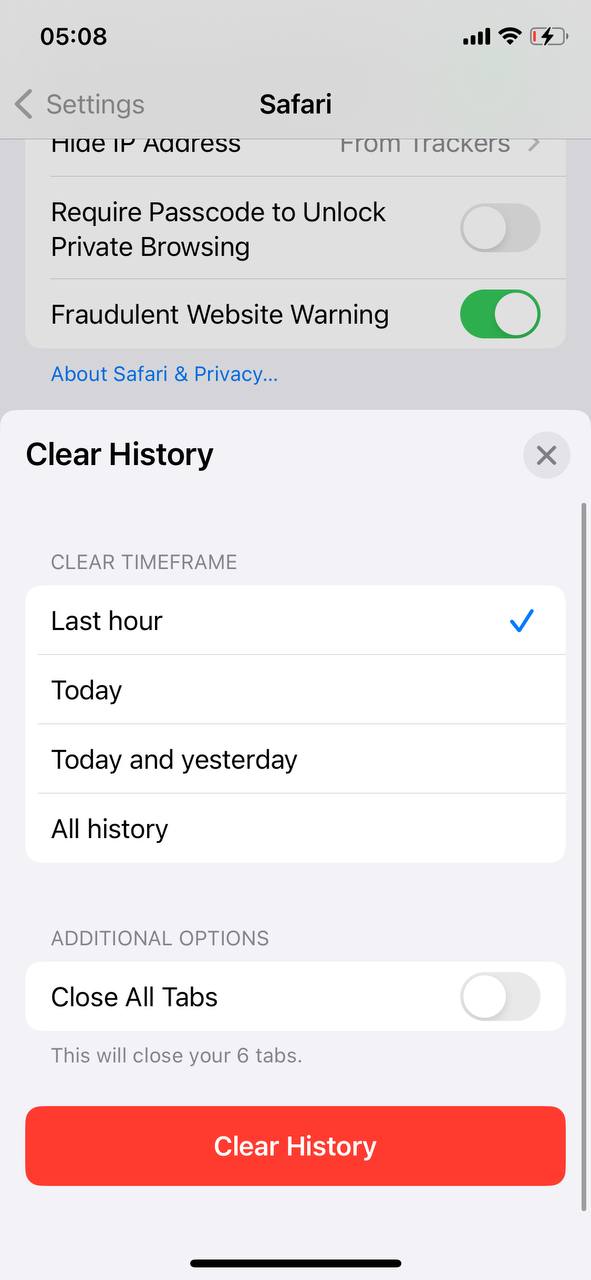
This action not only frees up space but also protects your privacy by erasing browsing history and data that could be used to track your online activities.
In the next section, we will explore how deleting large message attachments can also help reduce System Data on your iPhone.
Can Deleting Large Message Attachments Reduce System Data, and If So, How?
Deleting large message attachments is an effective strategy for reducing System Data on your iPhone. These attachments often include images, videos, and documents that can take up substantial space over time.
- Immediate Space Recovery: When you delete these large files from your messages, you directly free up storage that contributes to System Data.
- Improved Messaging Performance: Removing bulky files can also enhance the performance of your messaging app, making it quicker to load and more responsive.
To delete system data on iPhone effectively by removing message attachments, follow these practical steps:
- Open the ‘Messages’ app.
- Go to any conversation containing large attachments.
- Tap on the contact’s name at the top of the conversation.
- Select ‘Info’.
- Scroll down to see the ‘Photos’, ‘Links’, and ‘Attachments’ sections.
- Tap ‘See All’ and ‘Select’ to choose the attachments you want to remove.
- Tap the trash icon to delete them.
This method clears significant amounts of System Data and declutters your messages, allowing for a more organized management of system data on iPhone.
What Role Do App Caches Play in the Accumulation of System Data, and How Can These Be Cleared?
App caches significantly contribute to the accumulation of System Data on your iPhone. Caches store temporary data that helps apps load faster, but they can grow large over time and consume substantial storage.
- Speeds Up App Performance: App caches allow for quicker data retrieval, which speeds up app performance initially.
- Potential to Overload System Storage: If not managed, these caches can become bloated and use unnecessary storage space, affecting the overall performance of your iPhone.
To get rid of system data on iPhone by clearing app caches, follow these straightforward steps:
- Find the App: Scroll through the home screen to find the app whose cache you want to clear. We will use Spotify for example, but there are many more apps with this feature.
- Access App Settings: Tap on the app to open its specific settings. Note that not all apps will have a clear cache option. This varies by app and developer.

- Clear Cache if Available: If the app provides an option to clear cache, it will usually be labeled as ‘Clear Cache’ or ‘Delete Cache’ within the app’s settings. Tap on this option to clear the cache.
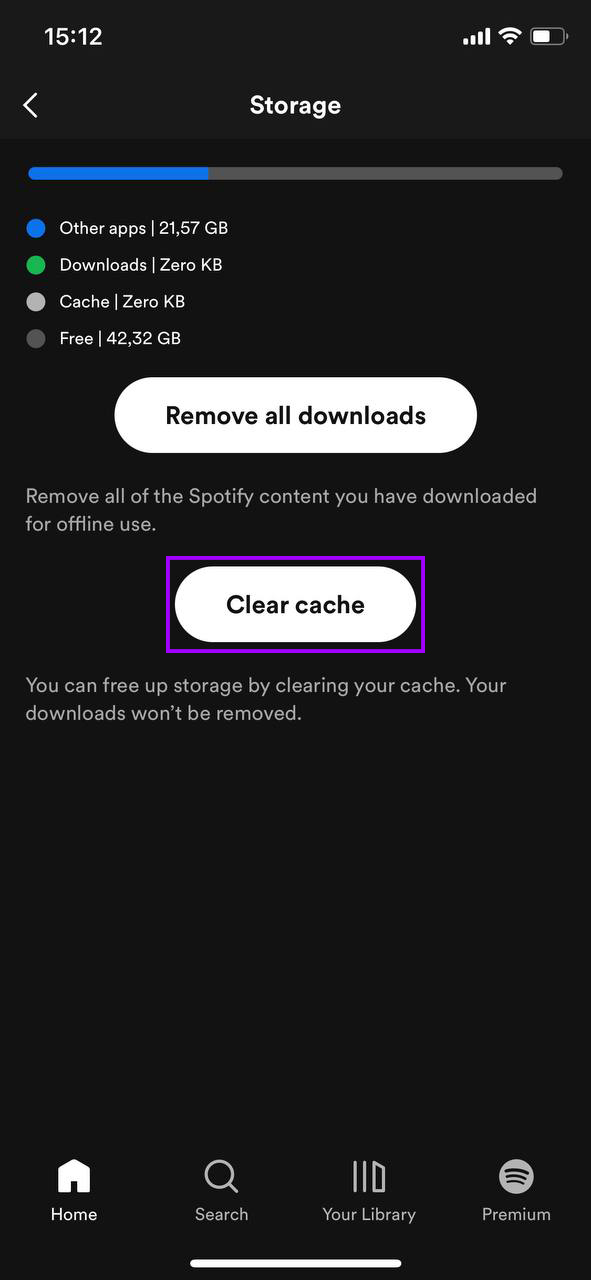
Regularly clearing app caches helps free up system data on iPhone, maintaining optimal performance and ensuring efficient storage use.
Deleting unused apps is an alternative way to free up system data on iPhone. Apps, especially those not regularly used, can take up considerable space due to their app data and cache.
- Open Settings: Tap on the ‘Settings’ icon from your iPhone’s home screen.
- Go to iPhone Storage: Scroll down and tap on ‘General’, then select ‘iPhone Storage’. This area will show you a list of all your apps and the amount of space each one is using.
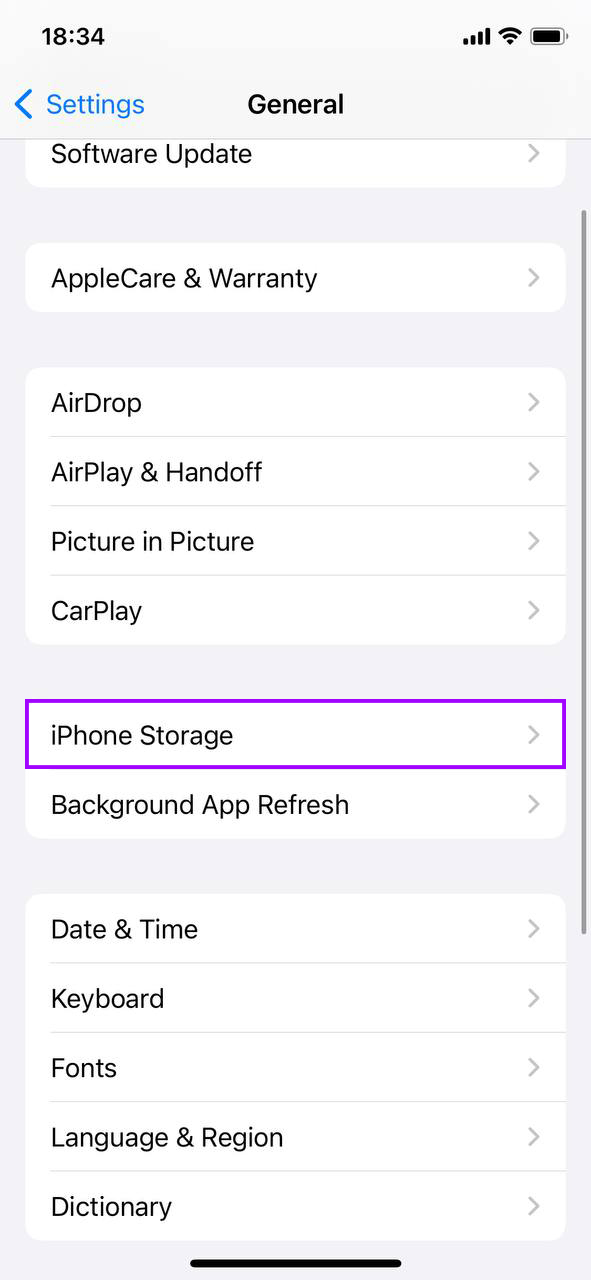
- Identify Unused Apps: Browse through the list to find apps that you no longer use. Consider the last time you used the app and the amount of space it occupies.

- Delete the App: Tap on the app you want to remove, then select ‘Delete App’. Confirm your choice by tapping ‘Delete App’ again to remove it completely from your device.
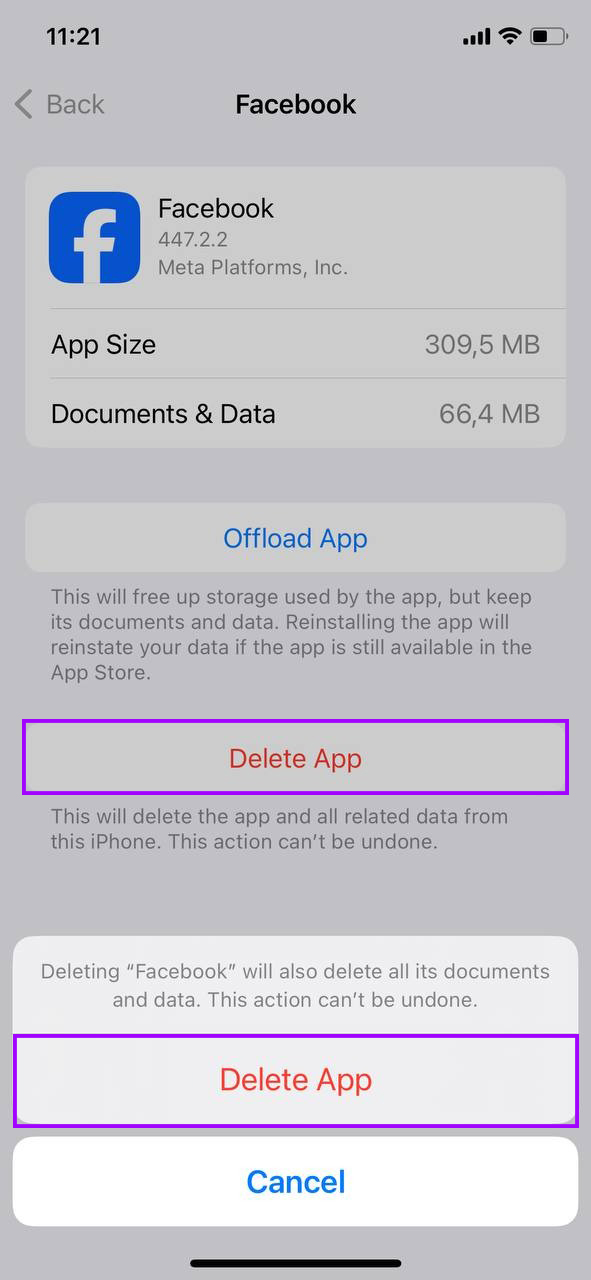
What is the ‘Offload Unused Apps’ Feature and How Does It Help in Managing System Data?
The ‘Offload Unused Apps’ feature is a useful tool for managing system data by automatically removing apps that you do not use frequently while preserving their data. This feature is particularly beneficial for iPhones with limited storage capacity.
- Preserves App Data: When you offload an app, the iPhone removes the app but keeps all its documents and data. When you reinstall the app, your data is restored, allowing you to pick up right where you left off.
- Frees Up Storage Space: By offloading unused apps, you can significantly reduce the amount of space taken up by apps that are not regularly used, thus managing system data more effectively.
To use the ‘Offload Unused Apps’ feature to manage system data on your iPhone, follow these steps:
- Open Settings: Tap on the ‘Settings’ icon on your iPhone’s home screen to begin.
- Access iPhone Storage: Scroll down and tap on ‘General’, then select ‘iPhone Storage’. This area provides a detailed breakdown of what’s consuming your device’s space, including recommendations for optimizing storage.

- Find the app to offload: Scroll through the list of apps to find the app you wish to offload. Tap on the app’s name to open its specific settings and storage details.

- Offload the app: Tap on ‘Offload App’. Confirm your choice by tapping ‘Offload App’ again in the dialog that appears. This step removes the application along with its system files but keeps all important documents and data on your device. The icon remains on the home screen with a cloud symbol next to it, indicating it can be reinstalled anytime and restored with its data.
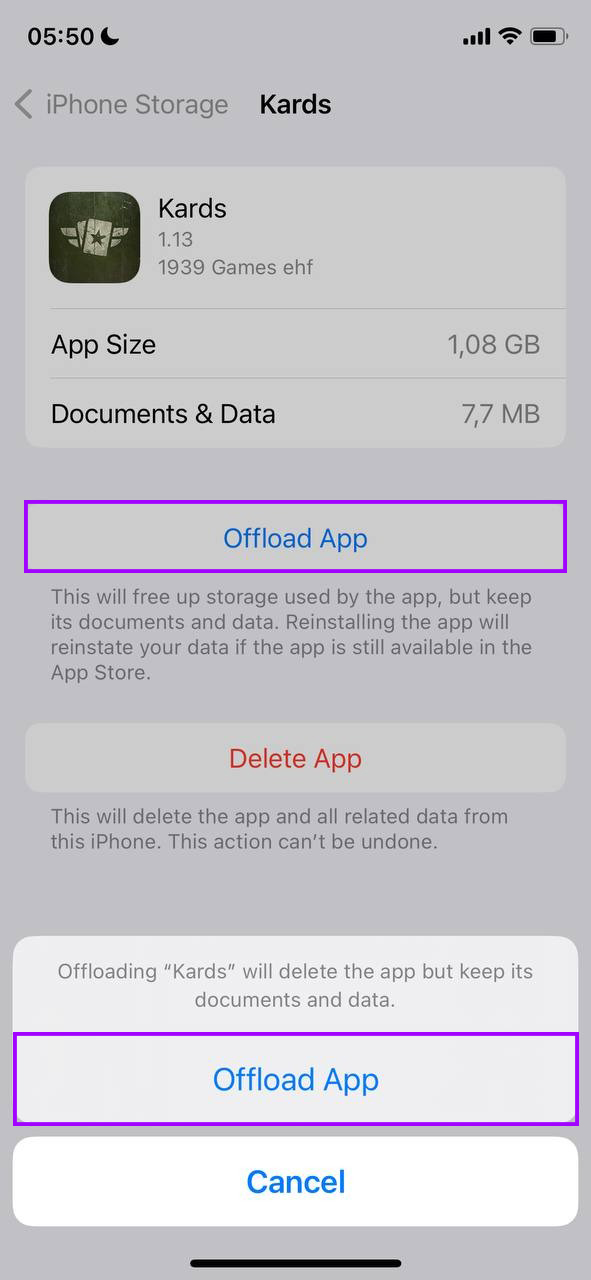
This feature helps maintain your iPhone’s performance by ensuring that only essential apps take up physical space on your device, while others can be restored as needed.
Next, we will delve into how backing up and restoring an iPhone relates to managing system data.
How Does Backing Up and Restoring an iPhone Relate to Managing System Data?
Backing up and restoring your iPhone significantly impacts the management of system data. These processes can clear accumulated system data and refresh your device’s storage condition.
- Clears System Data: A full restore from a backup clears out unnecessary system data that has built up, effectively resetting the iPhone’s storage environment.
- Preserves Important Data: Regular backups protect your personal data (such as photos, messages, and app settings) when you reset or restore your iPhone to manage system data.
To manage system data on your iPhone through backing up and restoring, execute these steps:
- Back Up Your iPhone: Connect your iPhone to a computer with iTunes installed. Open iTunes, select your device, and under the ‘Backups’ section, choose ‘This computer’. Click ‘Back Up Now’ to ensure you have an updated backup of your device on your computer.
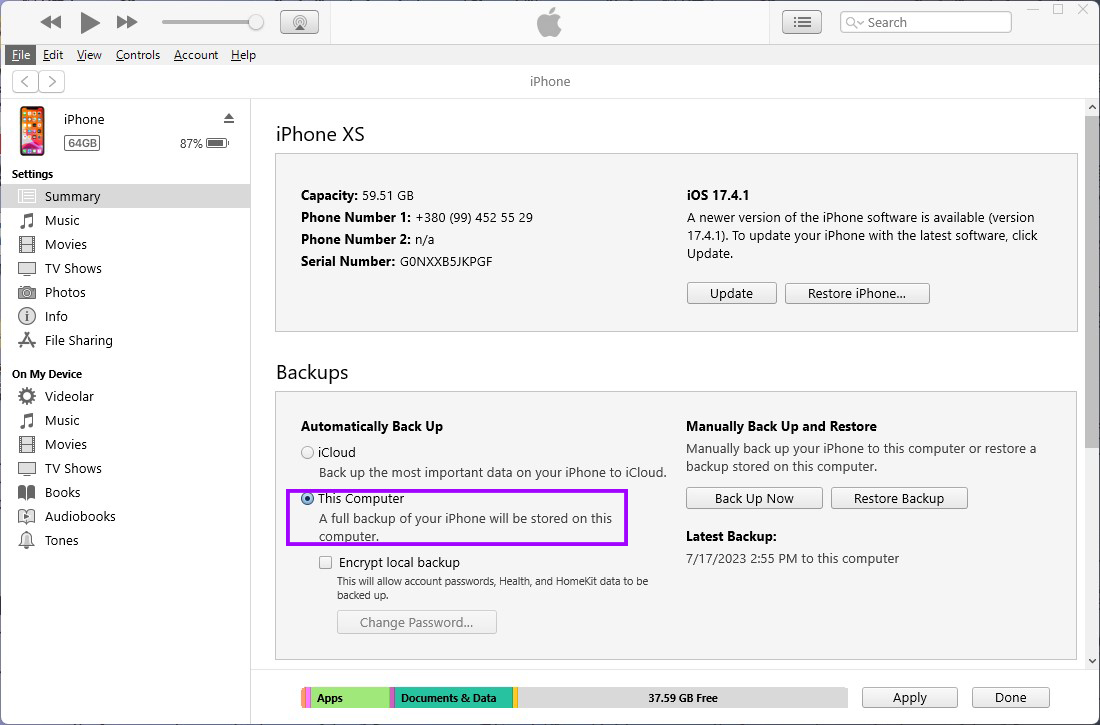
- Restore Your iPhone: After backing up, click on ‘Restore iPhone’. iTunes will prompt you to confirm that you want to restore your device to factory settings. This will erase all content and settings from your iPhone.
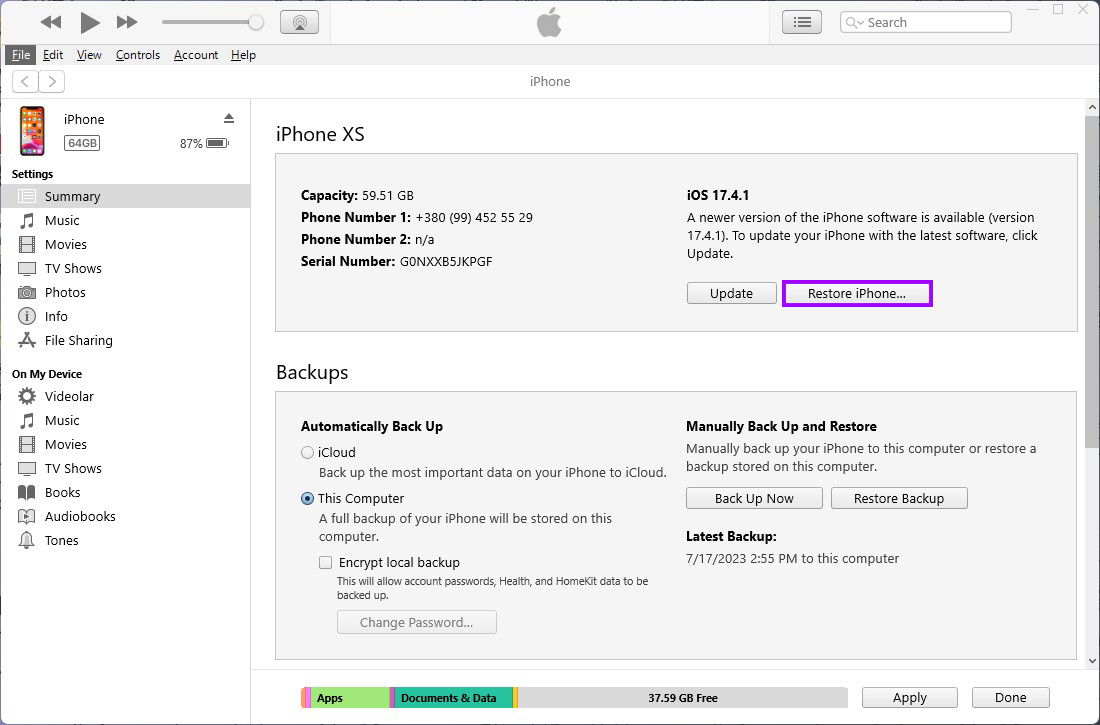
- Confirm the Restore: Click ‘Restore’ to begin the process. iTunes will download the software for your device and restore it to factory settings. This can take some time depending on your internet connection and the device model.
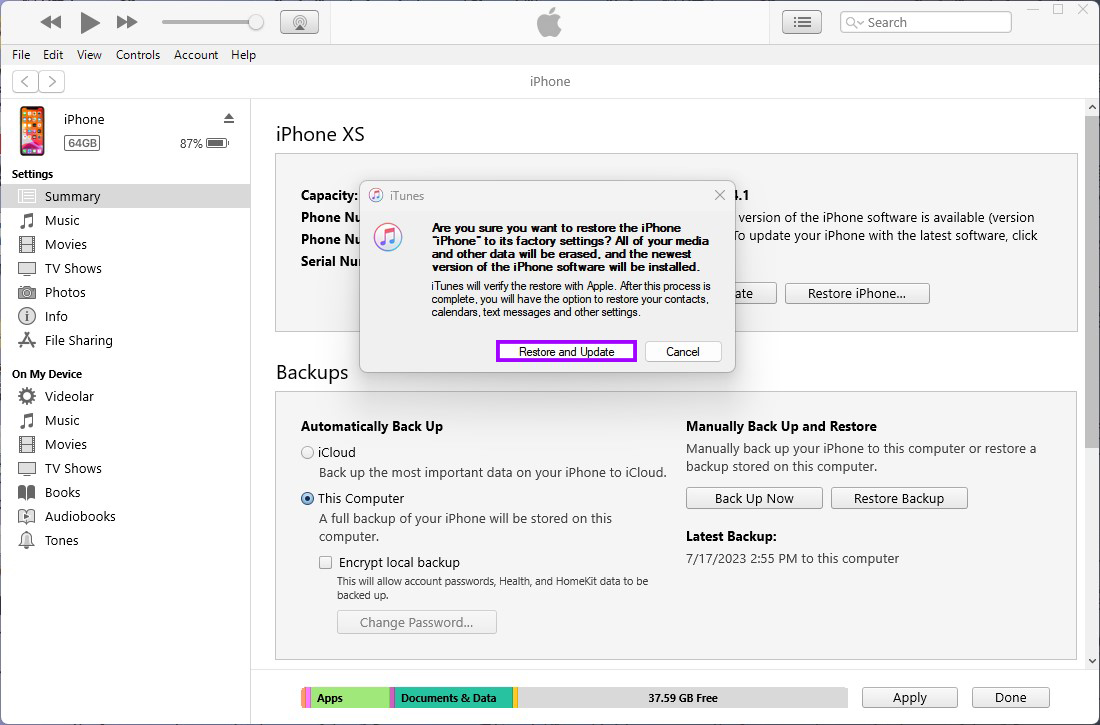
- Reapply Your Backup: Once the restore is complete, iTunes will ask if you want to set up your iPhone as a new device or restore from a backup. Select the backup you just created to put all your data, apps, and personal settings back onto your iPhone.
This method not only clears system data but also enhances the performance and efficiency of your iPhone.
Next, we will examine the common types of files included in System Data on an iPhone and offer strategies for managing them effectively.
What Are Some Preventative Measures That You Can Take to Minimize the Accumulation of System Data?
Taking preventive steps to manage System Data can significantly enhance the performance and longevity of your iPhone. Here are some effective strategies to prevent excessive accumulation of System Data:
- Regularly Clear Cache and Data: Make it a routine to clear app caches and website data from Safari and other browsers. This action prevents unnecessary data from piling up.
- Monitor App Usage: Use the ‘iPhone Storage’ feature in Settings to monitor which apps are using the most data and manage them accordingly. Consider uninstalling apps that consume excessive space without providing sufficient value.
- Update Apps and iOS Systematically: Keep your apps and iOS updated, but be mindful of the storage implications. Updates can sometimes introduce data that contributes to system bloat if not managed properly.
- Offload Unused Apps: Utilize the ‘Offload Unused Apps’ feature to remove apps that are not frequently used while retaining their data, which can be restored upon reinstallation.
By implementing these measures, you can effectively manage system data on your iPhone and maintain its performance. Regular attention to these areas ensures that your device remains efficient and clutter-free.
Conclusion
Effectively managing System Data is vital for maintaining optimal functionality and maximizing storage on your iPhone. This article has outlined key methods and answered common questions to help you understand and control System Data. Implementing these strategies will not only free up space but also enhance your device’s overall performance, ensuring it remains responsive and efficient in handling daily tasks.












